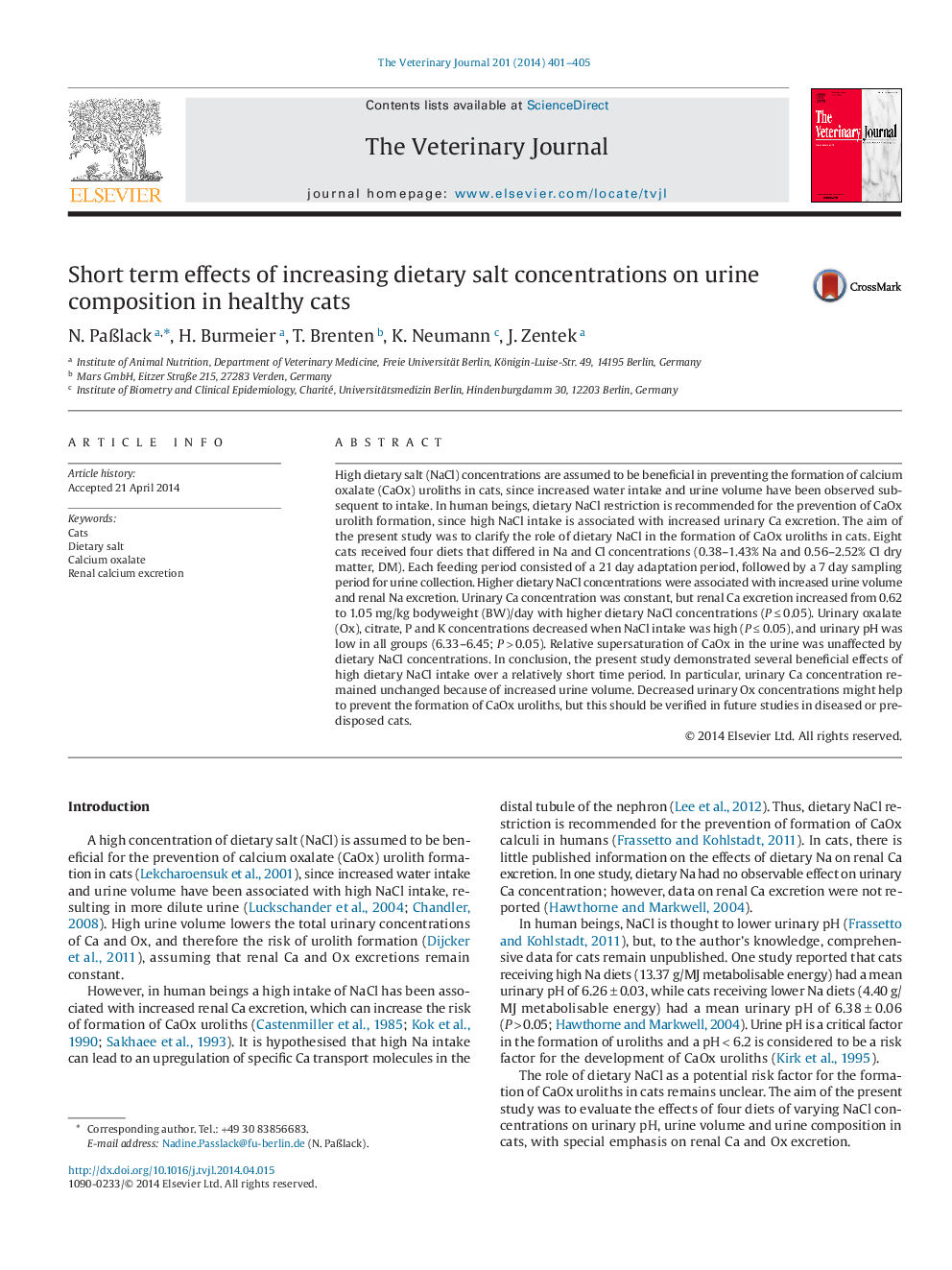| Article ID | Journal | Published Year | Pages | File Type |
|---|---|---|---|---|
| 5797995 | The Veterinary Journal | 2014 | 5 Pages |
High dietary salt (NaCl) concentrations are assumed to be beneficial in preventing the formation of calcium oxalate (CaOx) uroliths in cats, since increased water intake and urine volume have been observed subsequent to intake. In human beings, dietary NaCl restriction is recommended for the prevention of CaOx urolith formation, since high NaCl intake is associated with increased urinary Ca excretion. The aim of the present study was to clarify the role of dietary NaCl in the formation of CaOx uroliths in cats. Eight cats received four diets that differed in Na and Cl concentrations (0.38-1.43% Na and 0.56-2.52% Cl dry matter, DM). Each feeding period consisted of a 21âday adaptation period, followed by a 7âday sampling period for urine collection. Higher dietary NaCl concentrations were associated with increased urine volume and renal Na excretion. Urinary Ca concentration was constant, but renal Ca excretion increased from 0.62 to 1.05âmg/kg bodyweight (BW)/day with higher dietary NaCl concentrations (Pââ¤â0.05). Urinary oxalate (Ox), citrate, P and K concentrations decreased when NaCl intake was high (Pââ¤â0.05), and urinary pH was low in all groups (6.33-6.45; Pâ>â0.05). Relative supersaturation of CaOx in the urine was unaffected by dietary NaCl concentrations. In conclusion, the present study demonstrated several beneficial effects of high dietary NaCl intake over a relatively short time period. In particular, urinary Ca concentration remained unchanged because of increased urine volume. Decreased urinary Ox concentrations might help to prevent the formation of CaOx uroliths, but this should be verified in future studies in diseased or predisposed cats.
